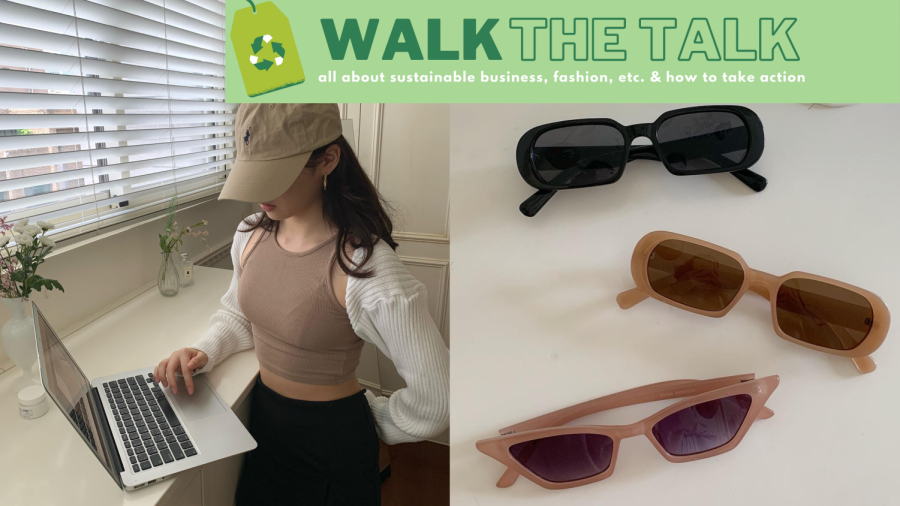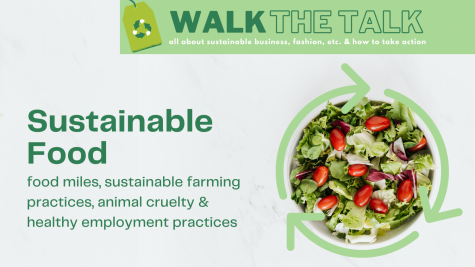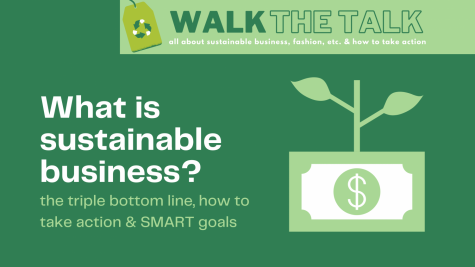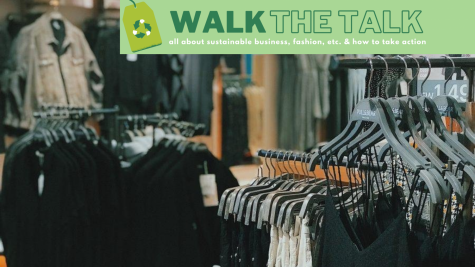WALK THE TALK | Sustainability in the fashion industry is a consumer responsibility
WALK THE TALK || The downfall of fast fashion has led to a steady rise for sustainability within the fashion industry. According to the World Resources Institute, in 2015, polyester production for textiles released about 706 billion kilograms of greenhouse gas, which is equivalent to the annual emission produced by 185 coal-fired power plants. As evident by the environmental consequences, the convenience that comes with the fast fashion industry comes with a cost. In the same sense, consumers should begin to take on the responsibility to help further sustainability when purchasing clothing.
The fast fashion industry has always been driven by the idea of “quantity over quality.” Fashion items are produced in accordance to the trendiest styles and clothing brands profit off the rapid production rate that maximizes consumer consumption. In fact, the max production that comes with fast fashion can be seen in textile dyeing, the process of applying pigments onto textiles. The Nature Climate Change Journal has stated that textile dyeing has become the second largest polluter of clean water. More specifically, the clothing industry is responsible for 10 percent of greenhouse emissions.
Besides the harmful impacts on the environment, fast fashion has expanded the extent to which unethical labor is used. The Human Rights Watch states that in Cambodian garment factories, $5.7 billion worth of clothes are produced each year, while the workers are only paid 50 cents per hour for 11 hours a day without any break time.
As fast fashion has become an increasingly prominent issue within the fashion industry, some vegan clothing brands have begun to sell cruelty-free clothing produced by adequate paid workers in humane working conditions. In fact, brands like Maison de Mode, a luxury ethical clothing brand, have created a system that allows customers to comprehend which items are recycled, cruelty-free or made of organic materials.
While many students in our generation have witnessed the rise and fall of fast fashion, many are also looking towards sustainability in the fashion industry. At Taipei American School, students like Christine W. (‘23) and Farrah F. (‘23) have taken matters into their own hands by starting a second-hand thrift store. Christine and Farrah’s second-hand thrift store is called milkthrift.tw. “I think people often overlook the little things you can do that help promote sustainability and sustainable fashion, such as buying or borrowing clothes from your classmates or friends, or even just going through the deep end of your closet to look for old clothes that you can re-style,” she said.
Students like Christine and Farrah show how consumers can expand their roles in catalyzing the rise of sustainable fashion. They noticed that thrift stores in Taiwan are often overpriced and target consumers who purchase expensive vintage items that high school students simply cannot afford. “Personally, I believe the second hand closet culture is a great way to get rid of your old clothes instead of throwing them away and having them end up in the landfills,” Christine said.
While purchasing fast fashion apparel online, or in person, may seem convenient, the aftermath that come with a mindless purchase are consequential. Consumers should look towards brands that implemented changes to their products in response to the rise of sustainability in fashion. Brands such as Dr. Martens, Old Navy, H&M and Zara have all begun to sell vegan clothing. Not only that, as of 2018, Gap, Gucci, and Hugo Boss have stopped producing clothing items that are made of fur. Indeed, educated consumers have begun to seek ways in which individuals like themselves can contribute to catalyzing the rise of sustainable fashion.


![A collection of college flags. [PHOTO COURTESY OF AMBER HU ('27)]](https://blueandgoldonline.org/wp-content/uploads/2025/05/IMG_5029-600x289.jpeg)

![An SAT word cloud. [PHOTO COURTESY OF WORDCLOUDS]](https://blueandgoldonline.org/wp-content/uploads/2025/05/SAT-600x600.jpeg)
![Collage of banned books, including “The Handmaid’s Tale” by Margaret Atwood. [MINSUN KIM/ THE BLUE & GOLD]](https://blueandgoldonline.org/wp-content/uploads/2025/04/IMG_4274-600x340.jpeg)



